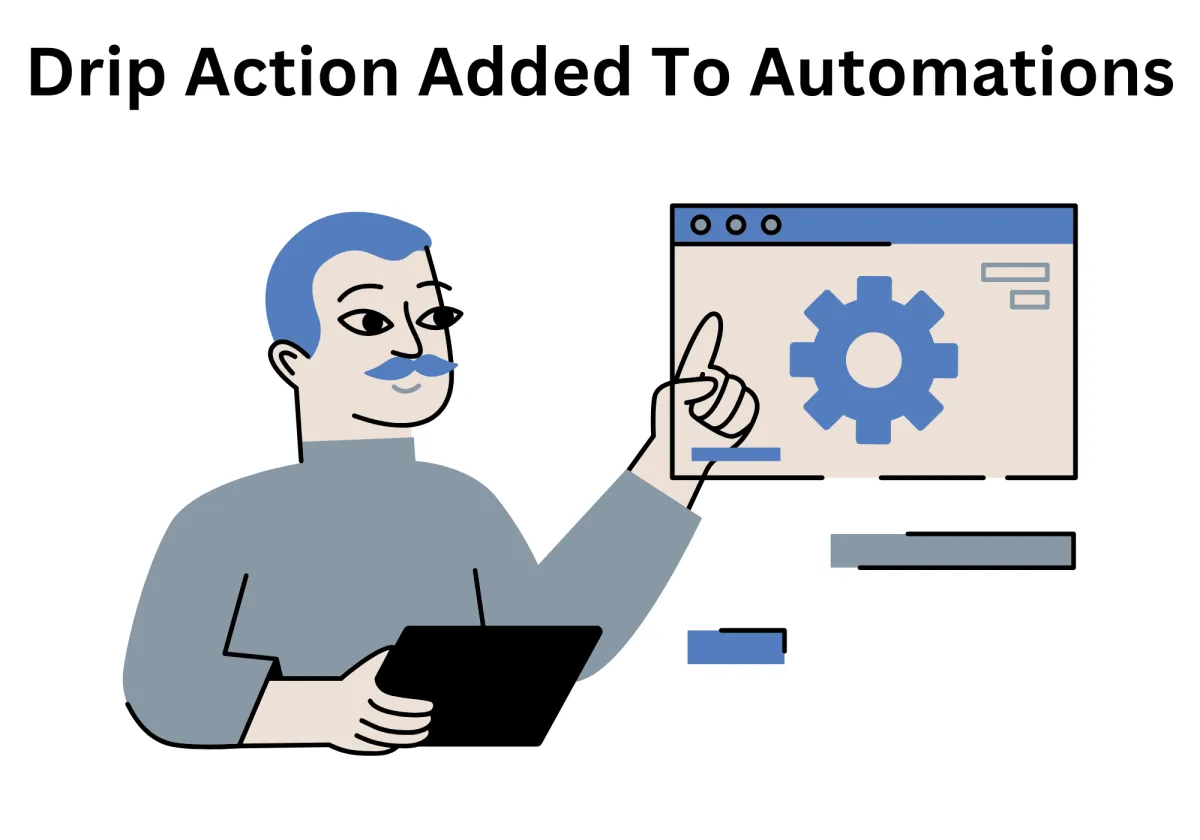
Streamline Your Workflow: The Power of Drip Action in Automation
For customers, spam messages are like red flags that often indicate untrustworthy or malicious intent. These unsolicited messages typically lack personalization and relevance, making recipients question the sender's credibility. In response, businesses are adopting drip action strategies, a smarter and more customer-centric approach to communication. Drip action ensures that businesses stay top-of-mind without crossing the line into spam territory. It transforms communication from a nuisance into a tool for nurturing relationships, aligning with modern customers’ expectations for respect and personalization.
To our CRM users, Zapiy added a new feature that will surely transform your business growth - the Drip Action tool. This valuable addition will allow you to manage and streamline the flow of workflow executions for seamless operations and effective process management.
Streamline Your Workflow: The Power of Drip Action in Automation
Drip Action Added To Automations and How It Works
What Is Drip Action in Automation?
Benefits of Drip Actions in Automations
Why Drip Action Matters to Your Business
How To Use Drip Action To Automation Strategy
1. Define Your Goals and Target Audience
2. Choose Your Drip Campaign Platform
Drip Action Added To Automations and How It Works
Drip actions are a game-changing addition to automation, offering businesses the ability to deliver personalized, timely messages and responses that resonate with their audience. By leveraging drip actions, businesses can enhance customer engagement and maintain a steady communication flow without overwhelming recipients.
What Is Drip Action in Automation?
Drip action refers to the systematic release of information or actions over time, often triggered by specific user behaviors or events. Instead of sending all information at once, businesses can use drip actions to space out their communications, such as emails, SMS, or app notifications. This strategic timing allows for a more digestible and meaningful interaction with customers.
How Does It Work?
Triggered Events:
Drip actions are initiated by customer actions or predefined triggers, such as signing up for a service, abandoning a cart, or completing a purchase.Segmented Delivery:
Messages or actions are scheduled to roll out over a set period. For example, an initial welcome email is followed by a product tutorial the next day, and a special offer a week later.Customizable Intervals:
Businesses can determine the frequency and timing of each action to best suit their goals and the audience’s preferences.Automated Adjustments:
Advanced systems can modify the drip sequence based on customer responses, such as clicking a link or making a purchase.
Benefits of Drip Actions in Automations
Enhanced Engagement: Drip actions maintain consistent, relevant communication with customers.
Personalization: Customizable content ensures the messages align with customer needs.
Efficiency: Automation reduces the manual effort required to follow up.
Better Conversions: Timely, strategic outreach encourages higher response rates.
Why Drip Action Matters to Your Business
Rather than bombarding customers with a single, overwhelming message, drip campaigns keep your brand top-of-mind without being intrusive. Consistent, relevant touchpoints improve engagement as customers feel more in control of the communication process. For example, sending a welcome message, followed by helpful product tips, and offering discounts at strategic moments creates a natural flow that feels tailored to the customer.
Increased Conversion Rates
By nurturing leads through automated, well-timed actions, you guide prospects down the sales funnel. A drip campaign ensures that each touchpoint provides value, progressively moving the customer closer to a purchase. For instance, a customer who abandoned their cart can be sent a reminder email with an additional incentive like a discount, increasing the likelihood of completing the purchase.
Customer Retention
Drip action also aids in retaining existing customers by maintaining regular contact and offering relevant, personalized updates about new products or services. Regular engagement keeps your brand at the forefront of their minds, increasing the chances of repeat purchases and fostering brand loyalty.
Time and Cost Efficiency
Automating repetitive processes like follow-up emails or reminders saves time and reduces the need for manual effort. This leads to more efficient use of resources, allowing your team to focus on higher-level tasks, like strategy and innovation.
How To Use Drip Action To Automation Strategy
Drip action added to automations is an effective way to build relationships, nurture leads, and engage customers without overwhelming them with messages. Here's how to use drip actions in your automation strategy:
1. Define Your Goals and Target Audience
Before setting up a drip campaign, determine the primary goal of your campaign and understand your target audience. Are you nurturing leads, welcoming new subscribers, or encouraging repeat purchases? Tailor your content to address the specific needs and interests of your audience. For instance, a welcome campaign might be different from a lead nurturing sequence or a re-engagement campaign. The clearer your goals, the more effective your drip campaign will be.
2. Choose Your Drip Campaign Platform
To implement drip actions, you need a marketing automation platform. Popular options include HubSpot, Mailchimp, ActiveCampaign, and Zapier (for connecting various tools). These platforms allow you to set up and automate email sequences, trigger actions based on user behavior, and track the success of your campaigns. Choose a platform that integrates with your existing CRM or e-commerce system to ensure smooth data flow and automation.
3. Design Your Drip Sequence
Next, design a series of emails or actions that will guide your customer or prospect through the desired path. Each message should build upon the last, providing increasing value without being overwhelming. The sequence typically follows these steps:
Initial Email (Welcome or Introduction): Start with a warm, friendly message that introduces your brand or product, and provides immediate value, such as a discount code, educational content, or product recommendations.
Follow-up Messages: As your customers engage, send targeted follow-up emails offering further information, testimonials, or helpful resources. For example, after a product is purchased, send a tutorial email or ask for feedback to keep them engaged.
Incentive Offers: Throughout the sequence, provide targeted offers like discounts, free trials, or exclusive content. These offers can be spaced out to keep the customer engaged without overwhelming them.
Reminder Emails: If the customer has abandoned their cart or forgotten to take action, send gentle reminders with added incentives, such as a discount or a limited-time offer.
4. Set Up Triggers and Timing
The power of drip campaigns lies in automation and timing. Drip actions rely on triggers, which initiate specific actions based on user behavior. For instance, if a customer signs up for your newsletter, you can trigger an automated welcome email series. If a customer abandons a cart, you can trigger an abandoned cart reminder.
Timing is critical in drip campaigns—sending emails at the right intervals can drastically affect their success. Too many emails in a short period can overwhelm a customer, while too few emails can make the campaign feel irrelevant. Typically, wait times between emails range from 1-7 days. Test different time intervals to find what works best for your audience.
5. Personalize the Experience
Personalization is key to making your drip campaign feel relevant and engaging. Address customers by their first name and tailor the content to their interests. If they’ve clicked on a product or service, send an email offering more details about that specific item. If they’ve interacted with your brand previously, use that data to offer them related content.
6. Monitor and Optimize
Once your drip campaign is set up and running, continuously monitor its performance. Platforms like Mailchimp and HubSpot offer analytics to track open rates, click-through rates, conversions, and other key metrics. Look for patterns in user behavior—are customers engaging with your emails, or are they unsubscribing? Are certain offers performing better than others? Use this information to optimize your campaigns, tweak email sequences, and improve your messaging.
7. A/B Testing for Better Results
To improve the effectiveness of your campaigns, conduct A/B tests. Test different subject lines, email content, send times, and calls to action to determine what resonates best with your audience. By continually testing and refining your drip campaigns, you’ll improve your conversion rates and keep your audience engaged longer.
8. Evaluate Customer Feedback
As your drip campaign progresses, gather customer feedback to further fine-tune your messaging. Pay attention to responses, open rates, and user interactions to evaluate whether your campaign is meeting the needs of your audience.
How To Set Up Drip Action in Zapiy
Here are simple steps to start using Zapiy's drip action feature:
1. Go to Automation > Workflow and start by creating a new workflow.
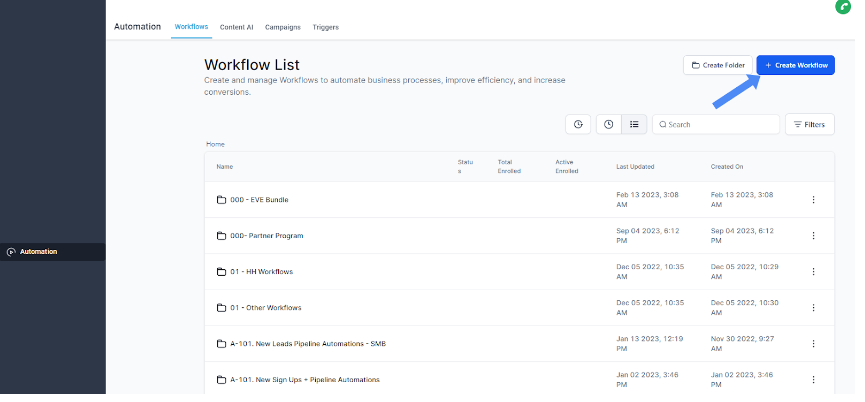
2. Locate Drip Action: Within the workflow setup in your CRM, find and select the Drip Action tool.
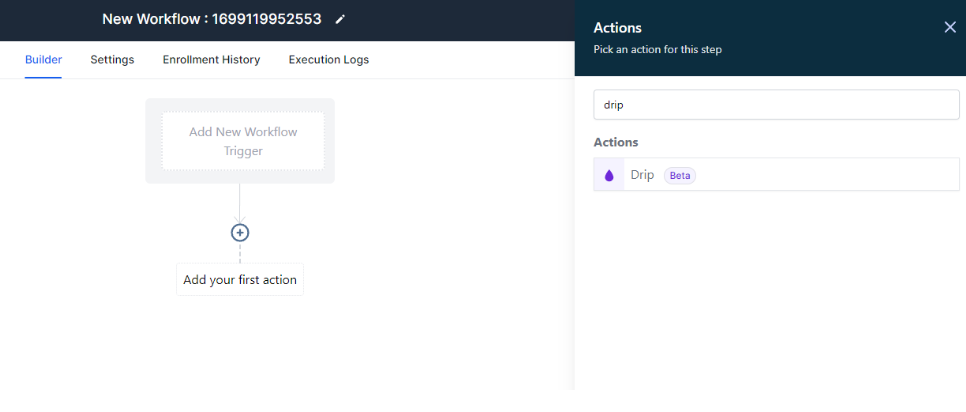
3. Determine Batch Size: Choose the batch size you want to process, with options ranging from as few as one to as many as 10,000 per batch.
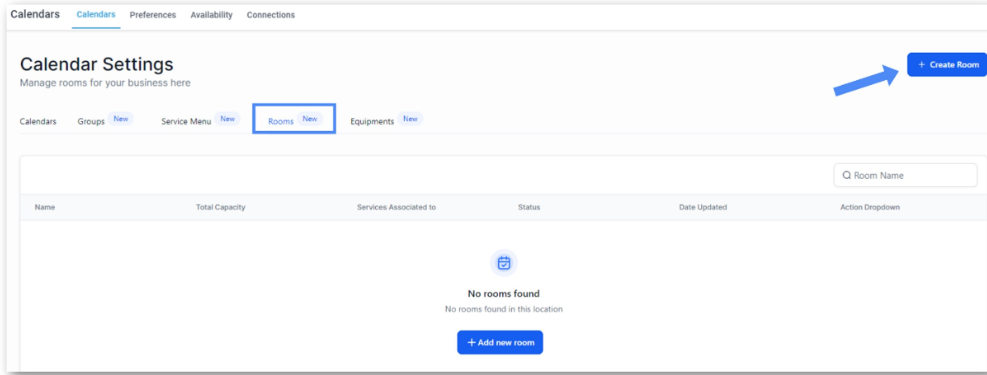
4. Set Drip Interval: Adjust the drip interval to control the timing of workflow executions. You can set intervals in minutes, hours, or days, anywhere between one minute and seven days.
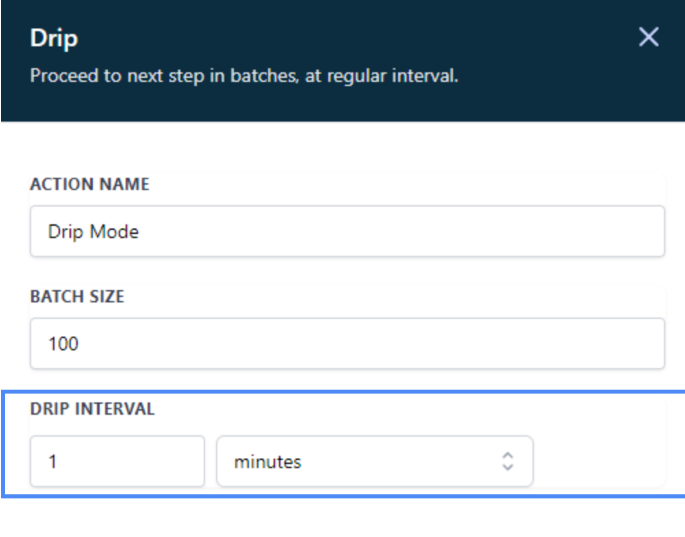
Using a single platform like Zapiy streamlines business operations by integrating essential tools into one cohesive system. It eliminates the complexities of juggling multiple subscriptions, reduces costs, and ensures seamless compatibility across features. With Zapiy, businesses benefit from simplified processes, a unified learning curve for teams, and centralized support, making troubleshooting and management more efficient. This all-in-one approach not only saves time but also enhances productivity and scalability, allowing businesses to focus on growth rather than managing disparate systems. If you're ready to choose convenience, efficiency, and a smarter way to handle your business needs, try Zapiy now.


Youtube
Facebook
Instagram
LinkedIn
TikTok
X
Pinterest